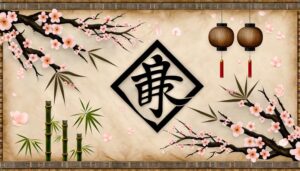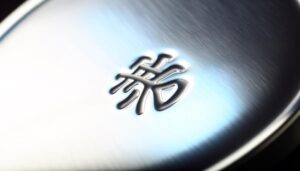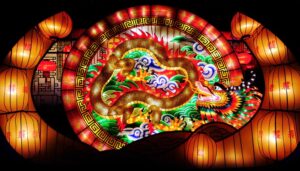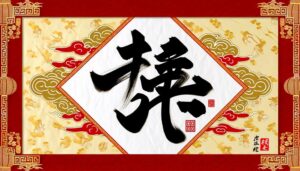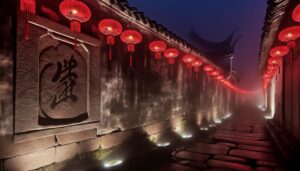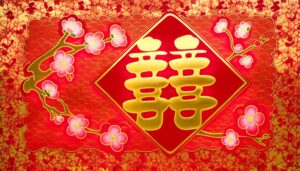Chinese Symbols for Health Wealth Happiness: What Are They?
The Chinese symbols for health, wealth, and happiness are deeply woven into the cultural and philosophical fabric of Chinese society. These ideograms, meticulously crafted through ancient calligraphy, symbolize holistic well-being, moral prosperity, and joy.
The symbol for health signifies a balanced integration of body, mind, and spirit, deeply tied to Traditional Chinese Medicine and concepts like Yin and Yang. The wealth symbol transcends mere material richness, embodying ethical living and communal prosperity.
Meanwhile, the happiness symbol represents joy and contentment. These symbols remain culturally significant today, prominently featured in calligraphy, festive practices, and modern design.
For deeper insights into their rich heritage, continue exploring.
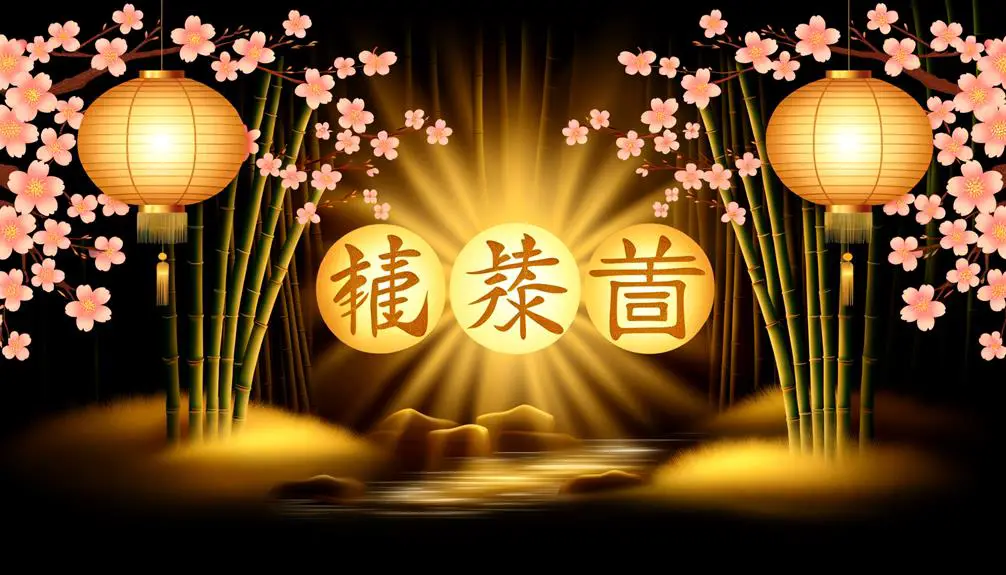
Key Takeaways
- Chinese symbols for health, wealth, and happiness are derived from classical calligraphy with deep cultural significance.
- The health symbol represents holistic balance, integrating body, mind, and spirit in Traditional Chinese Medicine.
- The wealth symbol embodies moral prosperity and material abundance, rooted in Confucian and Daoist ideals.
- These symbols are used in festive celebrations, architecture, and gift-giving to promote prosperity and joy.
- Modern usage blends traditional values with contemporary aesthetics, appearing in homes, corporate logos, and digital platforms.
Historical Origins
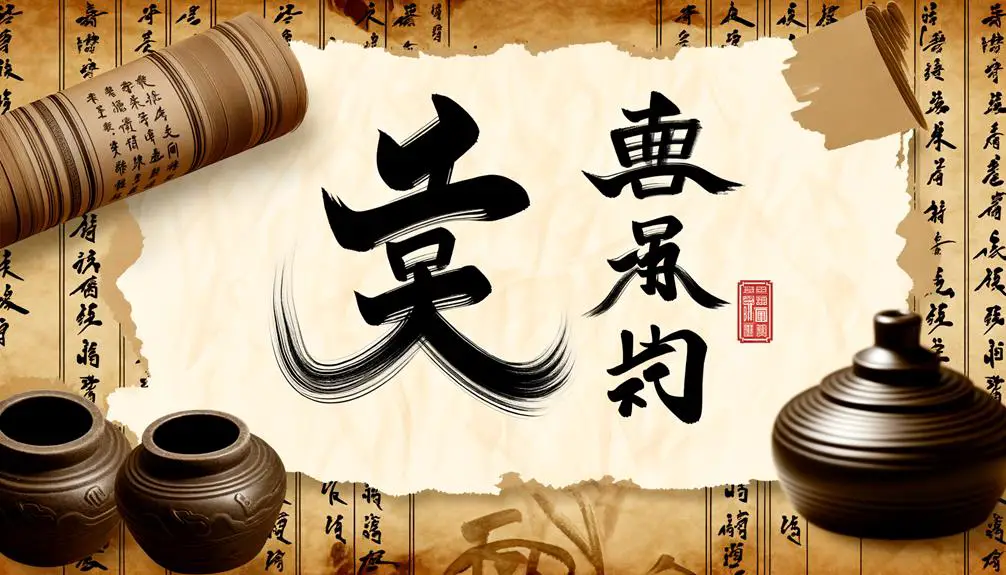
The historical origins of the Chinese symbols for health, wealth, and happiness are deeply rooted in ancient calligraphy practices and philosophical traditions, reflecting the intertwined values of these concepts in Chinese culture.
These symbols, often derived from classical Chinese characters, hold substantial cultural significance. Calligraphers of ancient China meticulously crafted these ideograms with brush strokes that encapsulate both aesthetic beauty and profound meaning.
Philosophically, these symbols are influenced by Confucian and Daoist ideals, which emphasize balance, harmony, and prosperity. The intricate designs are not merely linguistic tools but are imbued with cultural narratives that convey aspirations and societal values.
Understanding these symbols necessitates a contextual appreciation of their historical development and the philosophical doctrines that shaped their enduring significance.
Symbol for Health
The Chinese symbol for health, often depicted in the intricate strokes of traditional calligraphy, encapsulates centuries of wisdom from Traditional Chinese Medicine (TCM).
This symbol is more than an artistic expression; it represents the holistic balance of body, mind, and spirit, central to Chinese cultural philosophy.
Embedded in rituals, art, and daily practices, its significance extends beyond aesthetics, serving as a constant reminder of the importance of maintaining harmony within oneself.
Traditional Chinese Medicine
Rooted in ancient Chinese philosophy, Traditional Chinese Medicine (TCM) embodies a holistic approach to health, emphasizing the balance of mind, body, and spirit through the symbolic representation of harmony in the human body.
TCM's foundation lies in the dualistic concept of Yin and Yang, representing complementary forces that must remain in equilibrium for well-being. Practices such as acupuncture, herbal medicine, and Qi Gong are employed to harmonize these energies.
The Five Elements theory further contextualizes bodily functions and their interrelations, linking them with natural phenomena. This integrative framework reflects a cultural belief in interconnectedness and the profound influence of nature on human health, underscoring TCM's enduring significance in Chinese cultural heritage.
Symbolic Calligraphy Art
In the domain of Chinese cultural expression, symbolic calligraphy art serves as a profound medium through which the concept of health is visually and spiritually embodied. This ancient art form integrates meticulous brushwork with deep-seated cultural values, making each stroke a conduit for transmitting energy and balance. The character for health (健康, jiànkāng) is not merely written but is imbued with life force, echoing the principles of harmony in Traditional Chinese Medicine.
| Aspect | Description | Cultural Relevance |
|---|---|---|
| Brush Strokes | Fluid, controlled movements | Reflects inner peace and equilibrium |
| Symbol | 健康 (jiànkāng) | Embodies physical and spiritual well-being |
| Materials | Ink, rice paper, bamboo brushes | Traditional elements connecting past to present |
| Technique | Precision and rhythm | Mirrors the balanced life necessary for health |
| Interpretation | Multifaceted, holistic | Encompasses mind, body, and spirit |
The artistic portrayal of health in calligraphy is a proof of its enduring importance in Chinese culture.
Cultural Significance Explained
Through the lens of ethnographic detail, the character for health (健康, jiànkāng) serves as a profound symbol encapsulating the intrinsic values of physical wellness and spiritual harmony in Chinese culture. This symbol is not merely a representation of health but a holistic reflection of well-being, encompassing several cultural dimensions:
- Physical Wellness: Emphasizes the importance of maintaining a balanced body through diet and exercise.
- Spiritual Harmony: Highlights the integration of mind and spirit, often achieved through practices like meditation.
- Traditional Medicine: Reflects the significance of Chinese medicinal practices such as acupuncture and herbal remedies.
- Social Stability: Suggests that individual health contributes to societal harmony.
- Longevity: Underscores the cultural value placed on a long and healthy life.
These facets collectively define the character's deep-rooted cultural significance.
Symbol for Wealth
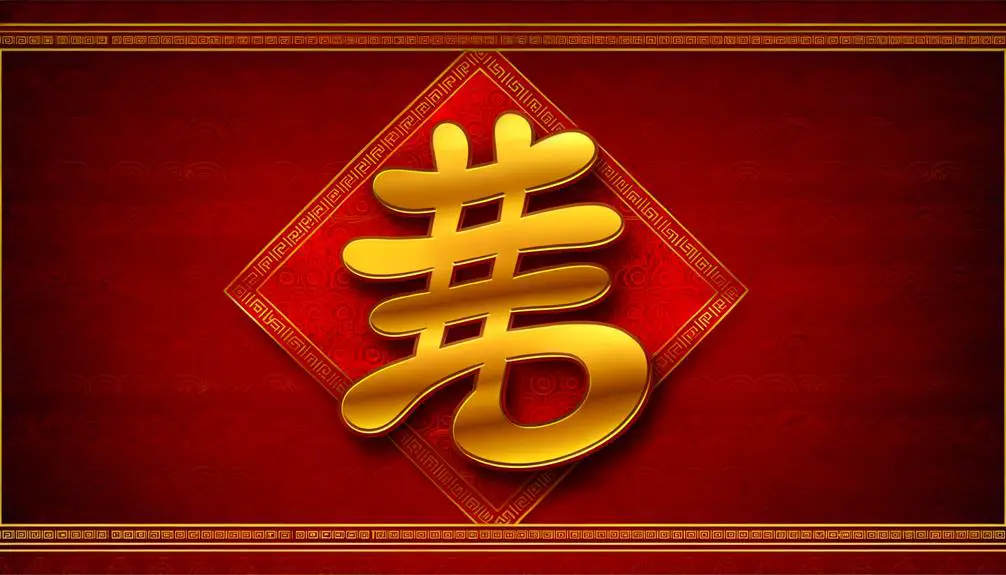
The Chinese symbol for wealth, '富' (fù), embodies a profound cultural significance that intertwines with the nation's historical values and philosophical teachings. Rooted in Confucianism and Daoism, the concept of wealth transcends mere material accumulation, emphasizing moral prosperity and societal well-being.
| Aspect | Description | Cultural Context |
|---|---|---|
| Character | 富 (fù) | Signifies affluence and abundance. |
| Historical Use | Associated with imperial prosperity. | Emphasizes the wealth of the nation. |
| Philosophical | Balances material and moral prosperity. | Reflects Confucian and Daoist ideals. |
Wealth in Chinese culture is seen as a harmonious blend of economic success and ethical living, essential for personal and communal flourishing. The symbol 富 (fù) therefore represents a holistic view of prosperity, deeply embedded in the fabric of Chinese society.
Symbol for Happiness
The Chinese character for happiness, '喜' (xǐ), has a rich historical significance rooted in ancient customs and traditions. Historically, it was prominently displayed during weddings and festivals to convey joy and auspiciousness.
In contemporary society, this symbol continues to hold profound cultural importance, often seen in homes and businesses as a representation of positive energy and communal well-being.
Historical Significance of Character
Rooted in the rich tapestry of Chinese culture, the character for happiness (福, fú) carries profound historical significance that has evolved through centuries of philosophical, social, and artistic expression. The symbol encapsulates the essence of well-being and contentment, deeply ingrained in Chinese societal values.
Historically, its importance can be observed in various domains:
- Philosophy: Confucianism and Daoism highlight happiness as a fundamental human pursuit.
- Festivals: During Lunar New Year, 福 is prominently displayed to invite good fortune.
- Literature: Classical texts often reference happiness as a key component of a virtuous life.
- Art: Traditional Chinese art frequently incorporates this character to symbolize joy.
- Architecture: Homes and temples are adorned with 福 to bring blessings.
These facets collectively underscore the enduring cultural and historical resonance of the character.
Modern Cultural Symbolism
Continuing its legacy from historical roots, the character for happiness (福, fú) today remains a potent symbol within modern Chinese culture, reflecting both personal aspirations and collective values.
Commonly displayed during festivals, especially Chinese New Year, 福 is often seen adorning household doors and windows, symbolizing a wish for good fortune and joy in the coming year. Its cultural significance is deeply intertwined with communal well-being and familial harmony, embodying a holistic concept of happiness that transcends mere individual satisfaction.
The character's presence in art, decoration, and everyday objects illustrates its enduring relevance, serving as a continuous reminder of the importance of happiness in both private lives and broader social contexts.
Cultural Significance

In Chinese culture, the symbols for health, wealth, and happiness hold profound significance, intricately woven into the fabric of daily life and traditional practices. These symbols are not merely decorative; they serve as powerful talismans, embodying deep cultural values and aspirations.
The reverence for these symbols is evident in various aspects of life:
- Festive Celebrations: Integral during Lunar New Year and other major festivals.
- Feng Shui: Used to attract positive energy and balance in homes and businesses.
- Calligraphy: Employed in art to convey blessings and good fortune.
- Gift Giving: Commonly featured in gifts to express well-wishes.
- Architecture: Incorporated in design elements to promote prosperity.
These symbols encapsulate the essence of a harmonious and prosperous existence.
Modern Usage
The symbols for health, wealth, and happiness continue to hold resonance in contemporary Chinese society, seamlessly blending traditional values with modern aesthetics and practices. These symbols are omnipresent, appearing in homes as decorative art, in corporate logos, and on digital platforms.
They are often used during significant events like the Lunar New Year and weddings to invoke prosperity and joy. In urban settings, these symbols adorn skyscrapers and public spaces, reflecting a collective aspiration for well-being. The integration into modern design emphasizes their enduring relevance, offering a bridge between past wisdom and present ambitions.
This dual function preserves cultural heritage while enhancing the symbols' applicability in steering today's fast-paced, success-oriented environment.
Conclusion
The Chinese symbols for health, wealth, and happiness encapsulate profound historical origins and rich cultural significance.
These symbols, deeply rooted in ancient philosophies and practices, serve not merely as linguistic representations but as embodiments of societal values and aspirations.
In modern contexts, their usage persists, underscoring a continuity of tradition amidst contemporary life.
By juxtaposing ancient and modern applications, one observes a harmonious blend of historical reverence and present-day relevance, reflecting the enduring importance of these ideals in Chinese culture.

